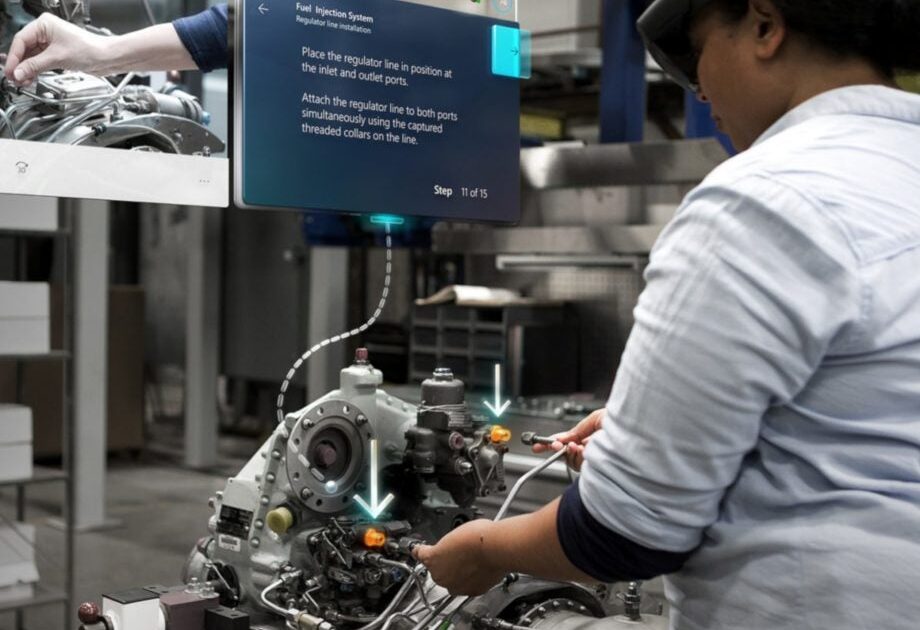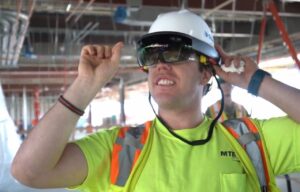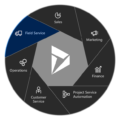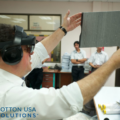Digital realities improve Manufacturing reality
Digital realities improve Manufacturing reality
Science fiction was yesterday. Today, virtual reality (VR), augmented reality (AR) and Reality (AR) or Mixed Reality (MR) have already arrived in operational reality.

Science fiction was yesterday. Today, virtual reality (VR), augmented reality (AR) and Reality (AR) or Mixed Reality (MR) have already arrived in operational reality. As with one of the clients of PLESSING.CONSULTING, they facilitate support and maintenance tasks, improve the quality of training, and help manufacturing companies increase quality and production speed.
As with one U.S. clients of PLESSING.CONSULTING, the Hololens2 and MS Remote Assist facilitate remote support and maintenance tasks.
As the number of use cases increases, so does adoption – and vice versa. The Boston Consulting Group expects the global market for augmented reality to grow almost tenfold increase in the global market for augmented realities in the next few years, from 30.7 billion billion US dollars (2021) to 296.9 billion US dollars (2024) explode. Where the consumer market is not the only important driver here.
In a cross-industry comparison, the US technology association XR Association registers a high level of approval for XR technologies, particularly in the of XR (extended reality) technologies in the manufacturing sector. In this sector, 50 percent of the companies surveyed are already using or investing in digital realities, a peak value. 68 percent see a tangible benefit and added value in XR for their for their business activities.
In Germany, too, new applications are being added all the time, with the Pandemic restrictions are a particularly clear demonstration of the augmented reality benefits. When travel and access restrictions make it difficult for external experts from outside the company for service and maintenance tasks, the AR benefits for integrating external knowledge become all the more obvious.
Munich-based enterprise AR specialist Re’flekt, for example, has developed a solution that allows companies to use the IoT to easily real-time data from machines and devices in AR applications for the first time. Any problems can thus be identified earlier and solved more quickly with the help of visual AR instructions. Mercedes-Benz relies on mixed reality in order to improve the quality of maintenance work and servicing and to speed it up at the same time and accelerate them at the same time.

Microsoft HoloLens 2 and the mixed reality application Microsoft Dynamics 365 Remote Assist. The combination supports service technicians on site with detailed virtual repair instructions and also enables them to communicate directly with the customer. With highly specialized experts, accessing their know-how and jointly servicing vehicles or production facilities without having to travel production facilities without having to travel around the world. This is where PLESSING.CONSULTING supports the B2B sector to initiate entry points for SME’s to understand potential benefits and cost savings in their daily operations. A broad experience with available solutions and devices on the market are needed to identify potential pitfalls for any company who want’s to jump onto this exciting endeavour.
In order to improve the quality and efficiency of training and achieve greater safety at lower cost, the paper producer LEIPA is using a new VR-TT at the Schwedt site is using a new VR training application from the mechanical engineering company Voith. It not only conveys vivid learning impressions of maintenance work in a dangerous environment, but also goes beyond what is possible in real operation. It can be used to teach training content that would otherwise require a production shutdown, which would cost thousands of euros within a very short time.
These are just a few examples of concrete application scenarios in production production, service and maintenance. Their number will continue to grow, according to the German Digitization Index for SMEs 2020/21. For industrial companies already working with digital realities, the benefits are evident. 88 percent of respondents have been able to reduce their error rate, by an average of 27 percent. According to the index, and 85 percent said that AR/VR/MR would generally improve their business processes in general. In view of this approval, the digitization index assumes strong growth – currently just eleven percent of industrial companies use the technologies, their number will triple in the future.
If you need experienced partners for your entry into the “new reality”, please contact us. We’ll get you on board!
PLESSING.CONSULTING
Content translation from the Microsoft Trendradar on latest developments for Manufacturing




